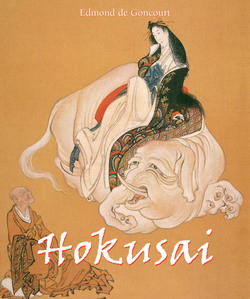Читать книгу Hokusai - Edmond de Goncourt - Страница 4
На сайте Литреса книга снята с продажи.
II. Surimonos, Yellow Books, and Illustrated Novels
ОглавлениеPlum Tree in Bloom, 1800.
Ink and colour on silk, 204.5 × 51.7 cm.
Nelson-Atkins Museum of Art, Kansas City.
Hokusai’s work was of staggering quantity and diversity, an oeuvre inscribed in the Japanese tradition, of course, but that the master took and made his own. Japanese painting traditionally takes three major forms: the kakemono or the makimono; the fan and the drawing for woodcuts which looks like an engraver’s drawing, done by the master in a size for a woodcut. The drawing itself is always done in India ink, the painter only trying colour versions on a few proofs printed in private for himself and his friends. Kakemonos are large format works, destined to be hung on walls; makimonos are small format works made to be held in one hand; surimonos, finally, are luxury versions of stamps. All these works are executed according to a complex printing technique, developed and improved throughout the history of the Japanese print, brilliantly used by Ukiyo-e artists, who bring beauty and sophistication to their height. Midway through the eighteenth century, techniques allowed the production of these prints in colour. Hokusai’s oeuvre is composed of writings (texts and poetry) and, above all, pictorial creations in various forms: kakemonos, makimonos, surimonos, and illustrations for books and albums, printed in black or in colour, of which the most famous are erotic books (shunga).
